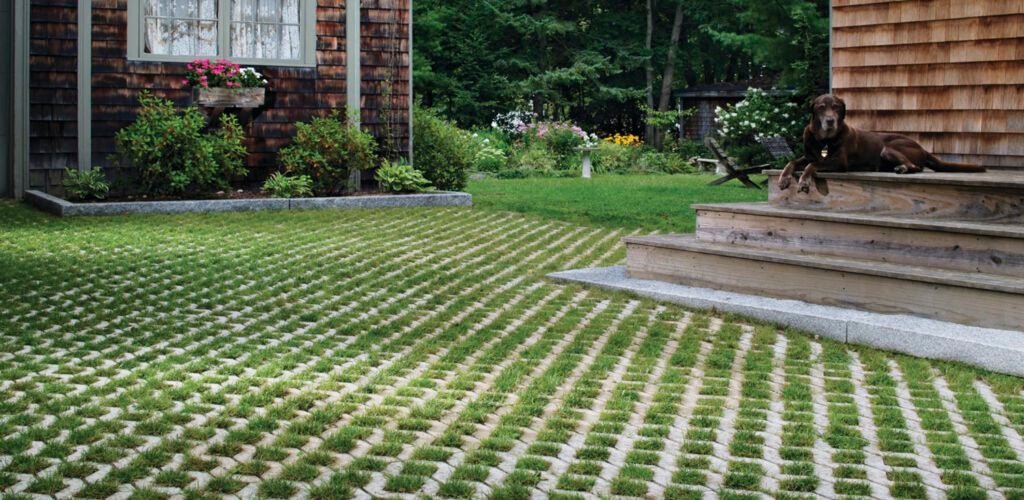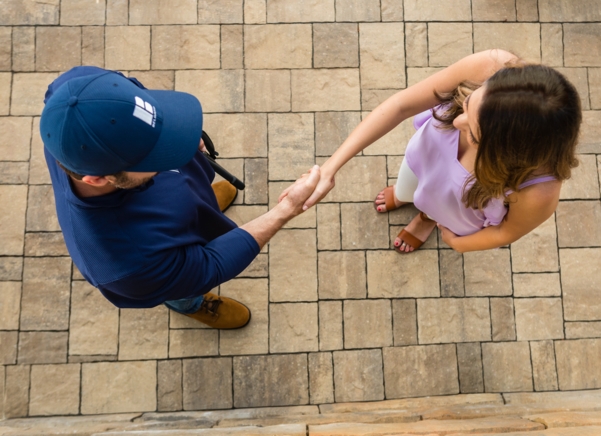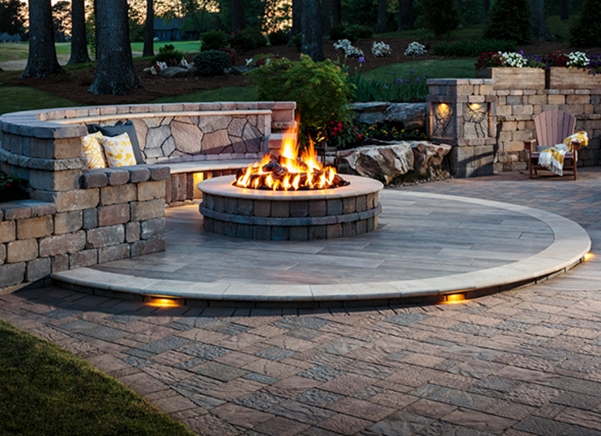For centuries, humans have sought the healing effects of nature, whether through a trip to the beach, a walk with the family dog, or a simple indoor plant. Modern society’s dependency on technology has created a growing disconnect with nature. As science continues to confirm the benefits on both mental and physical wellbeing, a movement has grown in the architectural world to incorporate biophilic (or organic) elements into the built environment to help reconnect us with nature.
What is Biophilic Design?
Whether using true natural elements or those that mimic nature, biophilic design has been championed for addressing workplace stress, health challenges, productivity and overall well-being. In the hardscape arena, we’ve seen this manifest in the increasing popularity of natural wood and stone textures, fire features, water features and vertical gardens – all of which help to create a vibrant and restorative environment. The latest biophilic trend for hardscape design is to entangle pavers with the natural environment to help blur the lines between the built environment and the natural environment.
FADING TECHNIQUE:
The most common entanglement technique is to allow the pavement to fade into the lawn or planting beds. This creates the visual effect that the vegetation has slowly broken into the hard surfaces. This can be done in formal or very informal ways. But if done well, the effect can be very pleasing to the eye and helps soften the space.

. . .
OUTCROPPING TECHNIQUE:
The second most common technique is to use large stone boulders or outcroppings. If buried properly into the landscape, these will provide a sense of permanence and the visual effect that the hardscapes (pavers and walls) and softscapes (landscaping) were designed around the feature. The pavers would then be woven in and around the rocks. This could also include vertical features such as walls, fire pits and even features like outdoor kitchens and fireplaces. The resulting effect can be stunning and can give a sense of timelessness to the space.

. . .
FORMAL INSET TECHNIQUE:
This technique has been around the longest and is the easiest to accomplish. Whether curved or angular, formal insets into the paved surface creates a more uniform look, while still allowing for the inclusion of organic elements such as a tree, butterfly garden or water feature.

. . .
STEPPING-STONE TECHNIQUE:
This technique is becoming increasingly popular with poolscape design. When using the stepping-stone technique, a rising trend is to use artificial turf instead of real grass. This reduces the need for water, a growing concern in certain climates, and eliminates grass maintenance.

. . .
PERMEABLE TURFSTONE™ PAVERS:
Turfstone™ pavers present a biophilic option that also helps manage stormwater runoff and can control and stabilize soil erosion. The unique design of Turfstone pavers allows greenery to grow right through the stones. The end result is a patio or driveway that filters rainwater and blends harmoniously with the natural landscape.


. . .
INSTALLATION CONSIDERATIONS
For the fading and stepping-stone techniques, restraining the edges can be a challenge. To prevent movement, edges would need to be supported in the same manner as the rest of the installation. For two restraints to work, the gaps in between would need to be at least 6” wide. Restraints with gaps may be required to allow the grass roots to penetrate. A troweled concrete edge is also an option. If using porcelain pavers, one installation option is to use a concrete slab base, in which case the pavers would be adhered to the slab, which would eliminate shifting concerns.


